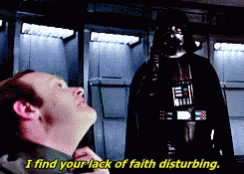Is Your Workplace Holding Onto Sacred Cows? Here’s What You Need to Know
Uncover what "sacred cows" mean in the workplace—those untouchable ideas or practices that block change. Explore their origins, the challenges they bring, and strategies for addressing them effectively.
You’ve likely seen those movies where the hero fights a menacing villain, only to discover an even greater force lurking behind them—the real mastermind, the “sacred cow” with ultimate power. In the Star Wars saga, Darth Vader is a formidable villain, but he answers to someone even more dangerous: Emperor Palpatine. As the true “sacred cow” of the empire, Palpatine is untouchable, wielding a vast power that even someone as feared as Vader must bow to his authority.
This idea of a “sacred cow”—an authority or figure above reproach—illustrates how real control often resides with those who remain shielded from challenge or criticism. In business and storytelling alike, these “sacred cows” shape decisions from behind the scenes, influencing outcomes and maintaining a level of untouchability that even powerful figures must respect.
What Does the Phrase “Sacred Cow” Really Mean?
Think of a “sacred cow” as that one idea, policy, or person in the office that everyone knows is off-limits. No matter how outdated, confusing, or downright useless it might be, it’s immune to criticism! In the workplace, these “sacred cows” are the untouchables—the policies and practices that are so ingrained in the company culture that nobody dares question them.
Whether it’s the never-ending Monday morning meeting or “that one guy” who hasn’t adapted since the '90s, sacred cows stick around, collecting dust and slowing down progress, because, well…they’ve been around forever, so they must be important, right?
And don’t worry, every office has a few sacred cows lurking around, making sure things never get too efficient.
Where Did the Term “Sacred Cow” Come From?
The term “sacred cow” originally comes from Hindu culture, where cows are sacred—respected, protected, and off-limits. Fast forward to the Western world, and “sacred cow” has evolved to mean anything that’s untouchable, unquestionable, or just plain off-limits—think of it as the office rule that’s been around since fax machines were cutting-edge.
These “sacred cows” eventually mooed their way into corporate lingo, referring to those ideas, practices, or people in a workplace that everyone just tiptoes around, even when no one’s quite sure why. So, next time someone tells you not to mess with “the way we’ve always done it,” remember: you’ve probably found yourself a corporate sacred cow!
Why Does the “Sacred Cow” Have Such a Bad Rep?
Let’s be real: sacred cows can be the worst type of blocker and the worst enemy of an organisation. When a policy, practice, or person becomes a “sacred cow” in the workplace, it’s like putting up a giant “Do Not Disturb or Closed” sign on progress. These untouchable fixtures block new ideas, slow down productivity, and frustrate anyone trying to shake things up. Imagine trying to modernise your workplace, but you're stuck dealing with ancient software or a colleague who hasn’t updated their approach since brick phones were cool—yeah, that’s the sacred cow effect.
Over time, this breeds resentment, as employees get tired of tiptoeing around these outdated relics. Instead of fostering growth, sacred cows can create a stagnant environment where everyone’s just going through the motions, praying the next company-wide memo will finally say, “Time to turn these cows into burgers!”

What Makes a “Sacred Cow” in the Workplace?
A “sacred cow” in the workplace is that untouchable policy, process, or person who somehow dodges all the usual rules. These sacred cows come in many forms: the ancient process nobody dares update, the VIP top dog of an employee who’s mysteriously immune to deadlines, or the department that seems to exist in a magical, no-questions-asked zone.
Sacred cows are typically wrapped in privilege, protected from consequences, and generally given a pass on accountability. And while everyone else has to keep up with the latest standards, these sacred cows just stroll along, quietly immune to feedback, deadlines, or performance reviews. In short, they’re the office legends—only, not in a good way!
Do Employees Tiptoe Around the “Sacred Cow” Out of Fear?
Absolutely! In most offices, “sacred cows” are handled with caution—and sometimes even fear. Employees avoid challenging these untouchables because questioning them can feel like career sabotage.
So instead of calling out that outdated policy or asking why one person is a walking exception to every rule, people just stay silent. This culture of “don’t rock the boat” can keep the whole team in line, even if the sacred cow is slowing productivity and tanking morale.

Can an Office Have Multiple “Sacred Cows”?
Oh, you bet! Most big organisations have a whole herd. From age-old policies to super-protected departments to VIPs who have long outgrown their roles, these sacred cows take up a lot of space and stall new ideas.
When your organization has multiple sacred cows, it's like walking through a maze of untouchable traditions and "don’t ask" zones, which makes change feel impossible.
How Do You Deal with a Toxic “Sacred Cow”?
Taking on a toxic “sacred cow” is no small feat, so tread carefully! Start by gathering facts and evidence to show how this cow is slowing things down. When you’re ready to talk to decision-makers, go in with a positive spin—highlight how change will help, rather than just pointing fingers and exploiting someone.
Bringing in a neutral third party, like a consultant or someone on the same level as the sacred cow, can also help spark those tricky conversations. Most importantly, building a culture that encourages transparency and continuous improvement will gradually make it easier for the team to question the status quo (and maybe even move that sacred cow out to pasture).







